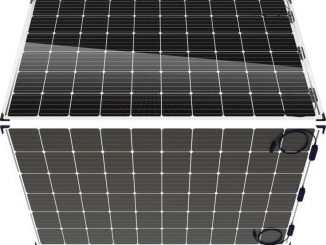
By 2022, India is expected to reach the 550 GW installed capacity mark and the renewable capacity share is expected to increase from the current 20 per cent to 33 per cent. The government is taking rapid strides for tendering wind and solar capacities to achieve its set targets. Over the past year, the Solar Energy Corporation of India (SECI) has announced bids for about 6 GW and 7 GW of ISTS-connected wind and solar capacity respectively and more such tenders are expected to be rolled out within 2018-19 itself. Thus, a large part of the upcoming renewable capacity is likely to be interconnected through the interstate transmission system (ISTS) system, calling for rapid transmission infrastructure addition.
Challenges faced by Powergrid
As a transmission system planner, Power Grid Corporation of India Limited (Powergrid) is facing several challenges. Renewable energy technologies have a low gestation period of 12-18 months. However, setting up a transmission system can take 24-48 months. Therefore, the transmission system needs to be planned in advance according to the renewable energy potential in different regions, which is often not the case. Also, for transmission network development, infrastructure has to be set up in one go unlike renewable power projects that can be set up in phases and capacity can be added as and when required. Another challenge is that the consumption points for renewable power are not always decided at the time of bidding. In the case of ISTS-connected projects, SECI approves most of the power purchase agreements, therefore, the transmission utilities do not have an early visibility into the expected power transfer. The technical issues related to renewable power transmission include transients leading to instability as well as making arrangements for supplying reactive power.
These issues surrounding the transmission system need to be mitigated to meet the capacity addition targets and to prevent renewable energy curtailment. To this end, the development of green energy corridors (GECs) was taken up in 2012. Under this, transmission for zones with high renewable potential was planned in anticipation of the capacity that was likely to be added. These GECs are being used to evacuate the renewable power that has mostly come up after 2016-17. While a part of the target transmission capacity has already been commissioned, in 2018-19, about 3,200 ckt. km of GEC will be added across Gujarat, Rajasthan and Tamil Nadu. The 100 GW solar target includes setting up of at least 50 solar parks with an aggregate capacity of 40 GW across various Indian states. In the first phase of GEC development, Powergrid was assigned the task of implementing the evacuation systems for eight solar parks across five states, of which the N.P. Kunta Solar Park in Andhra Pradesh and the Pavagada Solar Park in Karnataka have been commissioned.
Wind and solar energy zones
Recently, Powergrid along with the Ministry of New and Renewable Energy, the National Institute of Wind Energy, the state transmission utilities, state nodal agencies and wind developers have held discussions on the prioritisation of renewable energy zones with a special focus on wind energy zones (WEZs). Based on all stakeholders’ inputs, Powergrid anticipates that the transmission infrastructure for about 22 GW of wind and 50 GW of solar capacity would be needed in the next few years.
The way forward
For achieving higher renewable capacity addition, there is an urgent need for the establishment of a robust transmission path, however, several other steps can be taken to improve power management in the grid. Adequate reserves need to be provided to balance renewables. These reserves can be in the form of energy storage technologies such as pumped hydro, batteries or thermal power plants. Modes of flexible power supply should also be identified to support grid balancing. Moreover, an appropriate regulatory framework should be made to provide ancillary service support through renewables. Renewable power plants should also strictly comply with the set regulations on LVRT, harmonics, DC injection, etc., to maintain grid reliability. These steps combined with forecasting and real-time monitoring of renewable generation could go a long way in supporting the power transmission system of the country.
Based on a presentation by Sandeep Kumavat, Deputy Manager, Powergrid, at the “Power Transmission in India” conference




